

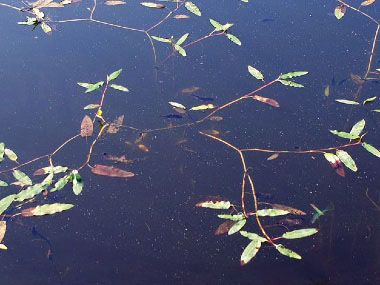

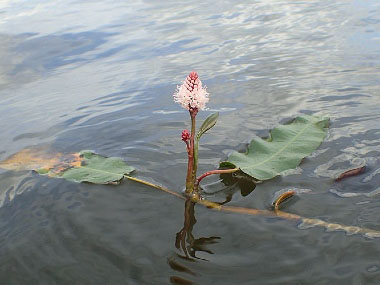
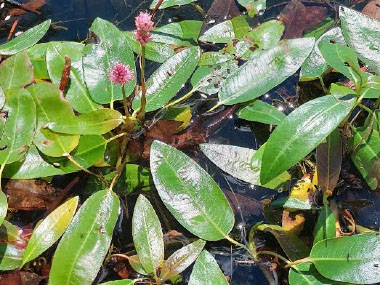
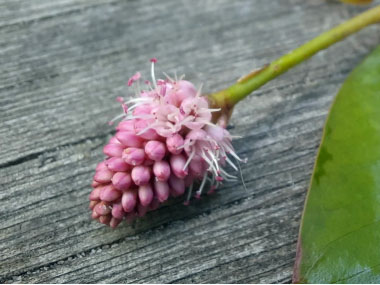
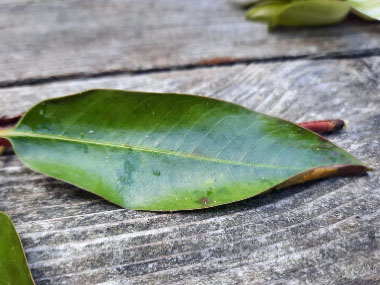
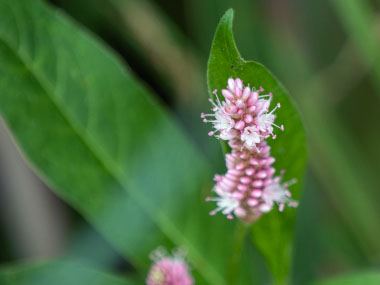
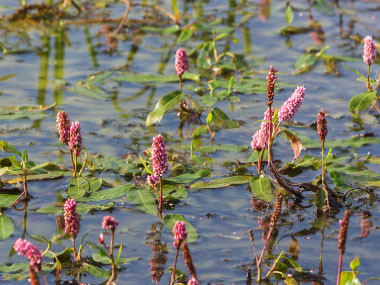
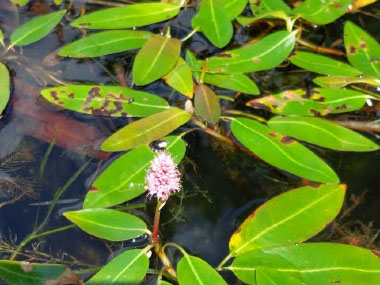
To support our efforts please browse our store (books with health benefits, etc.).
Known as water smartweed, water knotweed, longroot smartweed, scarlet smartweed, or willow grass, this is a versatile rhizomatous perennial, one of the few truly amphibious plants with aquatic and terrestrial forms. In the Polygonaceae (buckwheat) family, this herbaceous plant reproduces by seed and by rhizomes that root abundantly from the nodes. Like water smartweed, swamp smartweed (Persicaria coccinea), also occurs as a terrestrial and aquatic plant. These two smartweeds are extremely similar and nearly impossible to distinguish from each other; however, swamp smartweed lacks a leaf-like flange at the top of its ocrea, which is characteristic of water. Due to the confusion of these two species, their names are often interchanged. Both species are edible (see cautions in edibility section below). Water smartweed has a long history of human use. Several Plains Native Americans used this plant as a food source, while other groups derived medicines from the roots, stems, and leaves.
Distinguishing Features
Both the aquatic and terrestrial forms of water smartweed have thick spikes of bright pink flowers that occur at the top of a thick, smooth stalk above the alternate, oval, leathery green leaves. The terrestrial plant has stems that are erect to decumbent and densely pubescent (as are the leaves) and the leaf blades have sharp-pointed tips. The aquatic version grows underwater has glabrous (hairless) stems, leaves, and blunt-tipped leaf blades.
Flowers
One or two spike-like racemes occur at the top of the stem. Each one averages 5 to 10cm (2 to 4") long. Each flower measures about 4 to 6 mm (up to ¼") in length. Each flower has 5 pink to rosy pink sepals, 5 stamens with white filaments and pink anthers. The sepals are oval in shape and spread outward slightly when they are fully open. Blooming time occurs sporadically from June into autumn, lasting 2 to 3 months.
 Fields
of Nutrition has medicinal benefits and vitamin/mineral content of Water Smartweed.
Fields
of Nutrition has medicinal benefits and vitamin/mineral content of Water Smartweed.
Leaves
Terrestrial form: Leaf petioles are rigid, 0.5 to 1.5 cm (0.19 to 0.59") long, leaf blades measure 4 to 14 cm (1.5 to 5.5") long, and 1 to 3 cm (0.30 to 1.18") wide. They are more opaque, coarse and inflexible than in the aquatic form. Leaves are lanceolate, the margin is fine-toothed, and early leaves often have dark chevron-shaped blotches. Aquatic form: Stems branch underwater, and bear alternate floating leaves that are smooth, 4 to 10 cm (1.5 to 4") long, and 2 to 4 cm (1 to 1.5") wide. They are lanceolate/narrow-ovate, and the margin is entire or minutely toothed. Leaf petioles are flexible and measure 2 to 8 cm (1 to 3") in length.
Height
Water smartweeds can grow anywhere from 30cm to 1 metre (1-3') tall.
Habitat
These plants prefer part shade but can tolerate full sun. They are found in moist soil, ditches, along shores, shallow slow-moving or quiet waters. Water smartweed is native to North America but is widespread in Europe, parts of Asia and Africa.
Edible Parts
Water smartweed (young) leaves can be consumed raw or cooked. Young shoots are best eaten in the spring. Seeds can also be used but should be cooked; however, they are tiny and difficult to use. This plant should only be used if growing in a source of clean water. Also, it contains oxalates which are mostly removed when cooked.
Other Name
Water Knotweed.
Winter Survival Food Handbook

PDF Plant Magazines
Types of Wild Food
Geographic Zones Seasons
Disclaimer
EdibleWildFood.com is informational in nature. While we strive to be 100% accurate, it is solely up to the reader to ensure proper plant identification. Some wild plants are poisonous or can have serious adverse health effects.
We are not health professionals, medical doctors, nor are we nutritionists. It is up to the reader to verify nutritional information and health benefits with qualified professionals for all edible plants listed in this web site. Please click here for more information.
Why Edible Wild Food?
- Food costs are rising
- Free, wild food is readily abundant
- Wild food adds nutrition to your diet
- Wild food can help treat various medical conditions





